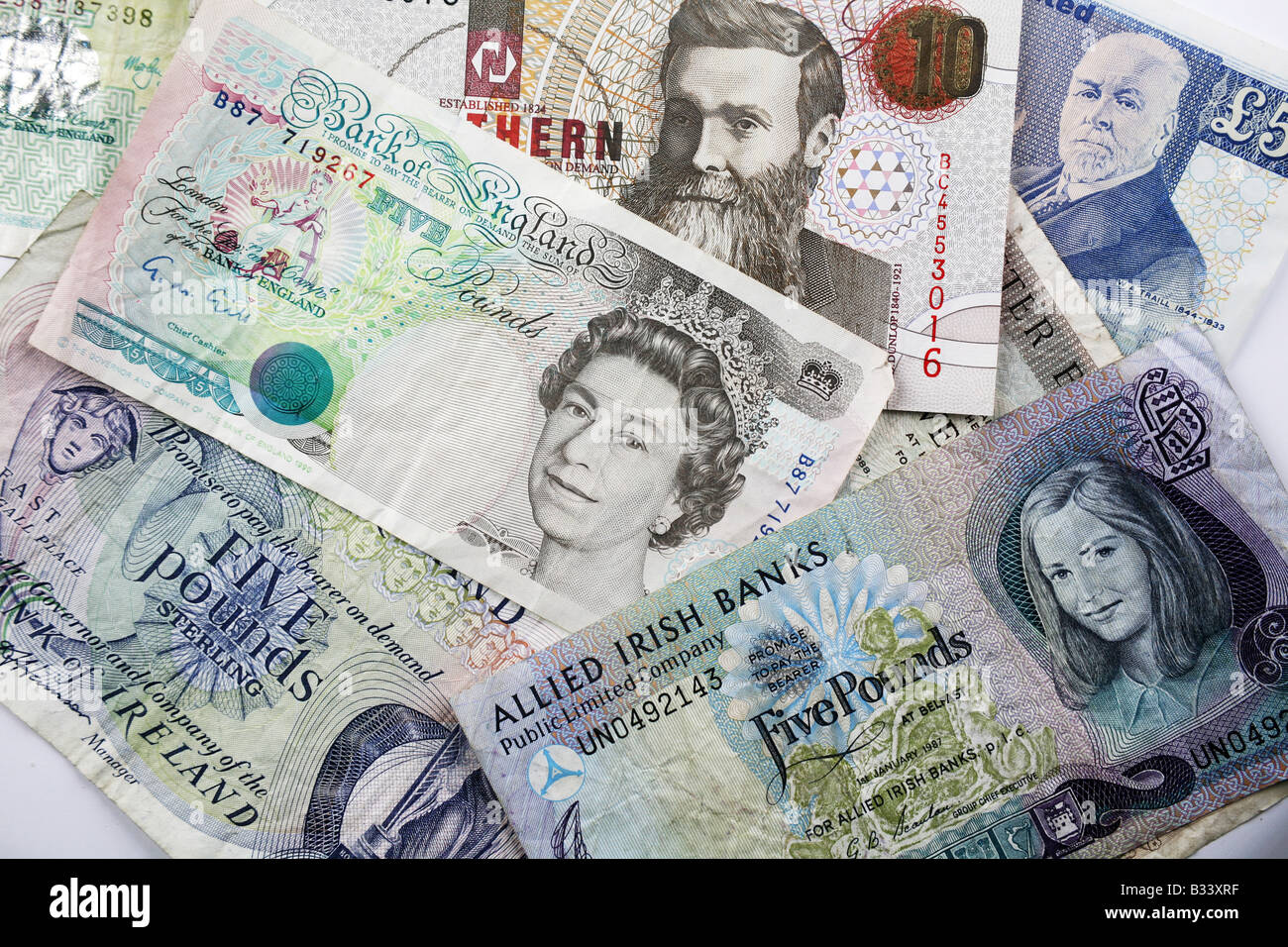Northern Irish Sterling and United Kingdom Bank notes

Image details
Contributor:
MOB IMAGES / Alamy Stock PhotoImage ID:
B33XRFFile size:
61.5 MB (4.6 MB Compressed download)Releases:
Model - no | Property - noDo I need a release?Dimensions:
5678 x 3786 px | 48.1 x 32.1 cm | 18.9 x 12.6 inches | 300dpiDate taken:
15 August 2008More information:
Banknotes have been issued for use specifically in Northern Ireland since 1929, and are denominated in pounds sterling. Like Scottish banknotes, they are not legal tender anywhere, but they are legal currency throughout the United Kingdom, and normal currency in Northern Ireland. The banknotes are widely accepted as currency by larger merchants and institutions elsewhere in the United Kingdom. Issuing banks have been granted legal rights to issue currency, and back the notes with deposits at the Bank of England. Sterling banknotes are the banknotes of the United Kingdom and British Islands, denominated in pounds sterling (symbol: £; ISO 4217 currency code GBP). One pound is equivalent to 100 pence. The pound is the official currency of the United Kingdom, the Crown dependencies of Britain and three British Overseas Territories. In these areas, seven retail banks have the right to print their own banknotes in addition to the Bank of England and the dependency and territorial governments. Unlike most other countries, banknote issue in Britain is not automatically tied in with one national identity or the activity of the state History. Until the middle of the nineteenth century, privately owned banks in Great Britain and Ireland were free to issue their own banknotes and money issued by provincial English, Welsh, Scottish and Irish banking companies circulated freely as a means of payment. As gold shortages affected the supply of money, note-issuing powers of the banks were gradually restricted by various Acts of Parliament, [7] until the Bank Charter Act 1844 gave exclusive note-issuing powers to the central Bank of England. Under the Act, no new banks could start issuing notes and note-issuing banks gradually vanished through mergers and closures. The last private English banknotes were issued in 1921 by Fox, Fowler and Company, a Somerset bank. However, some of the monopoly provisions of the Bank Charter Act only applied to England and Wales. The Bank Notes (S